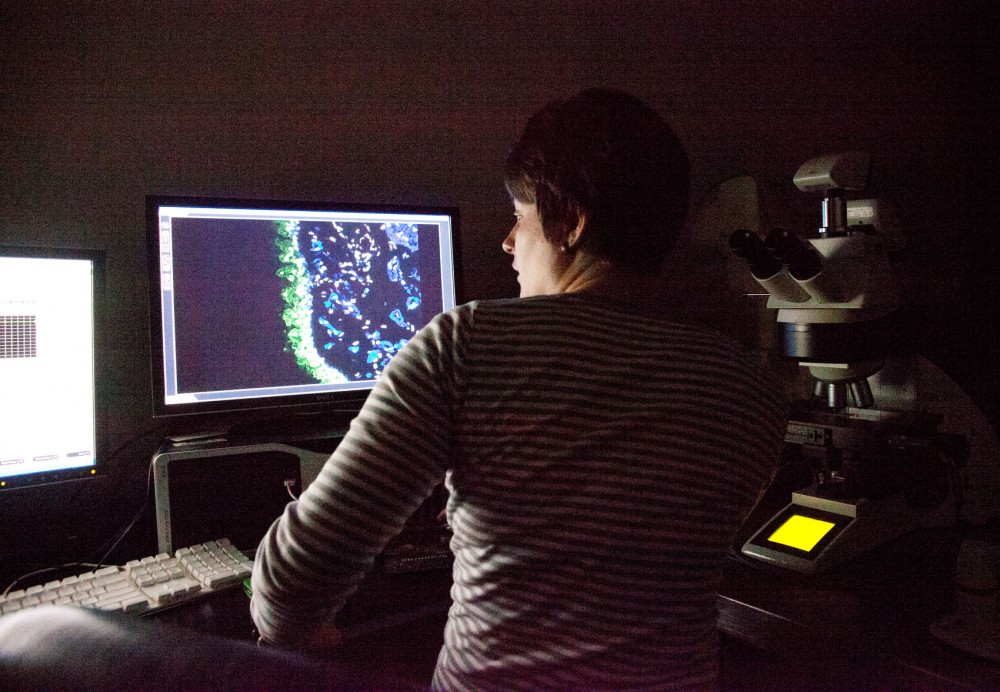University of Minnesota researchers know they won’t find the cure for cancer alone. To do so, they will have to collaborate with peers from many different fields, which is the theme University officials have chosen for the new Biomedical Discovery District.
The fourth building in the BDD, which will be completed next spring, will house cancer and heart disease research — two of the research departments with the most funding at the University.
Its completion will signify the University’s focus on biomedical research, said Dr. Aaron Friedman, dean of the Medical School.
“Remaining competitive and making sure that we can continue to be competitive … is really important,” he said. “And the district helps do that.”
A ‘lens’ for cancer research
The University has more than $100 million in peer-reviewed, cancer-related research and the Masonic Cancer Center oversees most of it.
Research in the new building will include studies of chemicals that can cause and treat cancer and others that analyze animal models of the disease.
Dr. Douglas Yee, director of the center, said they will collaborate with other BDD laboratories like the Center for Immunology for discovering cancer treatments and the Center for Magnetic Resonance Research for early detection of the disease.
“It wasn’t just a surgical problem. It wasn’t just a medical problem,” he said. “There’s lots of things that go into the equation.”
Though collaboration has always been a staple of the center, Yee said the BDD will give researchers greater opportunity to work together.
“The function of the Cancer Center is really to serve as a lens to focus all the talent that we have at the University on the problem of cancer,” he said.
Every day, discoveries
The University received $65 million in cardiovascular-related research grants in 2011. About half went to the Lillehei Heart Institute.
Researchers in the new building will study stem cell therapies for repairing heart damage and analyze how the heart functions both normally and abnormally to develop treatments for heart failure.
Like the cancer center, the institute will directly collaborate with other BDD labs like the Stem Cell Institute and the CMRR to diagnose and treat heart disease.
Dr. Daniel Garry, director of the institute, said the researchers in the BDD will also benefit from shared technologies like office equipment, high-end microscopes, centrifuges and the MRI machines to increase productivity and decrease costs.
Increased efficiency and collaboration will make research more successful, Garry said.
“I think this is what the BDD does,” he said. “It provides an unbelievable center where innovation and discovery can take place every single day.”


